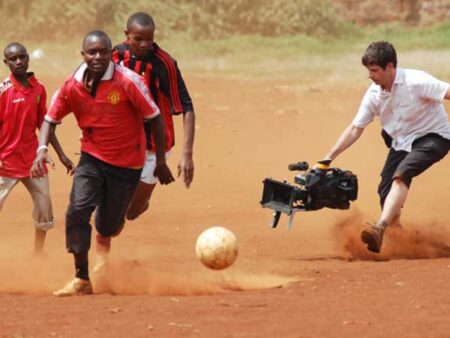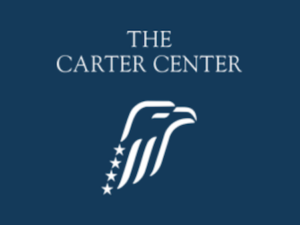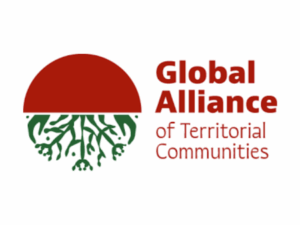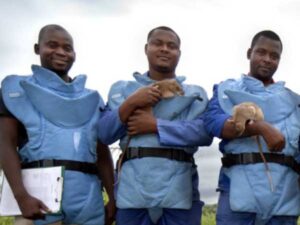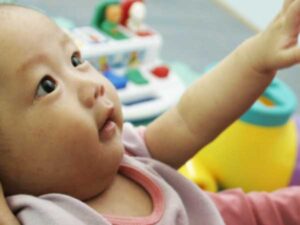Search for Common Ground is a peacebuilding organization with the majority of its staff working in their home countries to end violent conflict.
Lena Slachmuijlder of Search for Common Ground spoke with Priyanka Shankar on April 14, 2023. Click here to read the full conversation with insights highlighted.
Priyanka Shankar: Could you please introduce yourself and talk a little about your organization and what problem it’s addressing?
Lena Slachmuijlder: My name is Lena Slachmuijlder. I’m the Senior Vice President for programs at Search for Common Ground. Search for Common Ground is the largest dedicated peace building organization in the world. We were founded 41 years ago to transform the way that we deal with conflict away from adversarial and towards collaborative solutions. The problem that we’re trying to solve is that we understand that violent conflict today is the number one barrier to human progress in all facets of life. We know that over the last 50 years we’ve been able to see gains in education, in health, in economic prosperity, in astounding ways, very positive ways across the world, except in places where we have violent conflict. In those places, people are being prevented from realizing their potential, from living lives of dignity, and we are aimed at changing that issue. We also recognize that as our world becomes more polarized and as trust decreases, we’re also less able to collaborate across divides and solve the most pressing conflicts that we face as a humanity today.
Priyanka Shankar: What sets your organization apart from others?
Lena Slachmuijlder: We are active in about 33 countries across the world, in Africa, Asia, the Middle East, as well as in the United States. We have about 250 projects underway at any time, but there’s three things that set us apart. The first is this understanding of the importance of proximity. The design and practice of building peace at Search for Common Ground is led by people who are living through those conflict dynamics. More than 90% of our 1000 strong staff are working in their home countries addressing that conflict. Now this can be hard, because sometimes it can be harder for people to address conflicts that are close to them, but we see that the values outweigh those challenges because what it brings is context, relationships, and a real sense of tenacity and audacity about what’s possible.
The second thing that distinguishes us is that we don’t say we’re neutral or impartial, we embrace the idea of multi-partiality, because in conflict transformation, if you really want a result or an outcome to endure, all the parties in that conflict need to be able to buy into it and be able to defend it. Our approach is to create diverse teams even within those countries where we’re working to be able to engage the diversity of stakeholders. We know that in Nigeria we can’t build peace with a purely Christian team, or a purely Sunni team in Lebanon, or only working with men, or only working with one ethnicity in Burundi. So our commitment to driving change through this multi-partial approach is the second thing that distinguishes us.
The third thing that distinguishes Search for Common Ground, which has really been a signature of our approach for the last 40 years, is breaking out of this notion that peacebuilding is a space only for diplomats or peacekeepers, that it happens in training rooms or in conferences. What we call our Common Ground approach is the idea that we can work across divides, surface shared interests and needs, and transform conflict towards collaboration. This means that anybody can become a peacebuilder. As we lead people in the countries that we work through the Common Ground approach, we’re enabling people who are mothers to be able to step in and prevent violent extremism in Tunisia, we’re enabling religious leaders to have a role to play in an addressing the very violent land conflict in Nigeria, we may be working with musicians to address the issue of the regaining of trust and dignity for former child soldiers coming back to their communities. And so even though we’re a global organization, our work looks very differently in each of these places depending on whom we’re working with and what methodologies and tools that we use, but it still has this underlying signature methodology of the Common Ground approach, building trust, igniting collaboration to get to breakthroughs.
Priyanka Shankar: Could you give us an example of how you go through the process as an organization in any region, and maybe touch upon some lessons that could be learned through this?
Lena Slachmuijlder: I would love to share two examples. The first is from the Democratic Republic of Congo. We began working in that country in 2001 when it was still divided up. This is a country that underwent what we call Africa’s World War, more than five million people killed, millions displaced, and hundreds of thousands of women and girls were subject to horrific sexual violence. And when we asked people, “What do you see as the main source of insecurity in your community?” They actually pointed to people in uniform, and research backed up the fact that the major perpetrator of human rights abuses, including sexual violence, was actually the army. There was hardly a police force at that time, so we took upon ourselves the challenge to say, “How can we transform this relationship between civilians and the soldiers from being one of harm towards one of protection? How can we enable the soldiers themselves to move away from being perpetrators towards being connectors?”
The use of the Common Ground approach really showed up in a couple key ways that I want to highlight. The first was that we understood that in order for us to work with the soldiers in Congo, we needed to have empathy and understand their own perspective and their own needs, and their own sense of having been violated in their own humanity and dignity through the war that they’ve been fighting. Where other organizations were saying we need to professionalize, train and teach these soldiers, we developed a number of tools where the soldiers could identify themselves in the stories and the capacity building materials that we were offering to them. We used comic books, we used radio drama, we used theater as a way of enabling the soldiers to reflect on their role and be able to embrace the need to be protectors of human rights.
We equipped the soldiers themselves to be able to open up the training and conversations within their own brigades and battalions so that they felt that this was theirs, not something coming from an organization or from people who didn’t understand them. We understood that empathy comes with trusted messengers, trusted catalysts of change within the army, but the second thing that we did was recognize that to improve their behavior in protecting human rights, it would come down to the relationship with the civilians. This program was over about 12 years, and we had the soldiers collaborating with the civilians, having dialogue sessions, having town hall meetings, sometimes doing community projects together to effectively surface those areas of common interest, even their own shared humanity through sports, through culture as ways of enabling them to see each other as humans and work through the deep trauma and divides that had pitched them apart.
When we measured the impact of how this changed the relationship about eight years later we found that, whereas only 20% of civilians had indicated that they trust their safety in the hands of soldiers from when we started, it moved to about 60%, and after 12 years it was over 80%. This was an example where through creative peace building, through the understanding of empathy and strengthening the relationship as a driver of change, we were able to save lives and to strengthen that relationship which has maintained itself to today.
The second example I want to give is from Sri Lanka. In 2018, we could see that every day thousands of people were getting online and that the online space was becoming more and more toxic. There was harmful content online, there was polarizing content online, so we asked ourselves, “What can we do about this?”We said, “Well, let us actually try to work with people where they’re at.” So as opposed to going towards maybe the most popular influencers or the online journalists, we actually designed an initiative where we worked with what we called digital community stewards, people who host online Facebook groups, online WhatsApp groups, sometimes with a few dozens, sometimes with hundreds or even thousands of people. These are people who are talking about sports, culture, cooking, but who are in an online community, and we said to ourselves, “How can we shift the norm in those communities?”
We trained these digital stewards to be able to understand how to detect and combat fake news, we encouraged them and trained them how to make more engaging and inclusive content to keep their groups strong. And then you may remember the Easter bombings that took place in Sri Lanka in April. That led to enormous pain and suffering by the Sri Lankan people, and notably a real divide between the Muslim populations with the rest of the citizens. There were riots, there were attacks. And at that moment, a rumor circulated that 11 soldiers had been killed in a majority Muslim village. This rumor was taken on by a minister who went on television and repeated this rumor, but the digital community stewards were able to detect that this was actually fake news and, within a four-hour period, they were able to circulate that this was fake. It caught the eye of the minister who went back on television and debunked that rumor, and we can say with confidence that certainly there were lives saved from the riots that were averted.
Through this example of Sri Lanka, we again embraced the fact that when we understand where people are at in their lives, when we understand who they trust, we can enable anybody to step in and drive collaboration and address conflict peacefully. These were two stories that I wanted to share.
Priyanka Shankar: What are some of the challenges in building this trust and how do you deal with the challenges?
Lena Slachmuijlder: I think there’s two main challenges. One is that trust is actually very hard to build. I personally have worked in places where there’s been horrific inter-community violence, for example in the Great Lakes region of Africa, and where people are being asked to trust people who they know were part of killing members of their family. When you are trying to build trust, you need to go as slow as needed because the collaboration that arises from trust actually only moves at the speed of trust. It’s very important for us to recognize that the pace and the way in which we build trust needs to be very sensitive to the context. Very often with our Common Ground approach, we don’t decide to directly bring people who’ve had their family members killed and talk about those incidents, or try and find out who’s right and who’s wrong. What we try to do with the Common Ground approach is surface other shared needs, enable people to have a conversation about education, perhaps have a conversation around some of the norms and traditions that may enable them to realize that they share some values even though they’ve experienced this horrific violence. It’s very important for us to recognize that trust building can be slow and trust can be broken by another wave of violence. That’s the first thing.
The second thing is that a lot of times, I think peacebuilders or change makers inaccurately believe that change can happen simply when we raise awareness about something or teach people something. A lot of programs are built around this idea that we’re going to let people know about this problem and teach them how to fix it. That overlooks the fact that a lot of the reasons why people actually change the incentives that drive them to take something forward, to change their own behavior, is really about relationships. It’s about relationships where they see themselves belonging, or where they see themselves respected, where their contribution is honored, where they feel included. From that space, people can then exert and exercise their agency and their leadership, but if we overlook that piece and just focus on teaching people things, we’ve seen time and time again that the results are really limited.
Priyanka Shankar: What do your next projects look like? Is it always when a crisis breaks that then you decide your next steps or do you already have any specific projects planned out?
Lena Slachmuijlder: Search for Common Ground has a 10-year strategy that we’re implementing, and we have selected a set of what we call the consequential conflicts in the world today, those that are leaving a significant loss of life where there’s important economic and regional consequences of this conflict. When we decide to work on those conflicts, we commit for this change to happen over a minimum of 10 years. We only go to a country and try to raise resources and build teams to do this work when we understand that we have an additional value to bring, and where we of course have the permission of the governments and the different stakeholders involved in the conflict. We are continuing to work on conflicts such as Yemen, where there’s movement around a potential peace agreement, and where we know that there’s a generation of work to still do to enable people to live in peace.
We’re one of the few organizations that stayed in Afghanistan after the takeover by the Taliban and our commitment to the Afghan society is a long one where we understand there’s a need for strengthening relations of trust, for enabling everybody to be able to contribute and participate in that society, and to strengthen the skills of navigating grievances without conflict. We continue to work in the Sahel, the area with Mali, Burkina Faso, and Niger, where the levels of violence have exploded over these last few years, and where the combination of community-based peace building and an understanding of the online space is more present in the work that we do.
I’d like to say one more thing about something that’s very present for us as we go forward and look at how we’re shaping our programs over the next few years, that is this understanding that online harms can actually lead to offline violence. Through what we call digital peace building, Search for Common Ground is aimed at enabling different stakeholders to understand online harms and mitigate that while also using digital tools to bridge divides and create trust, collaboration, and breakthroughs. Across our programs from the United States to Asia, Africa, and the Middle East, we’re equipping people to be able to be more aware of how they can navigate in this online space, recognizing that it can be very harmful, as well as a driver for peaceful change.
Priyanka Shankar: Do you have conversations with or deal a lot with governments as well? I’m going to take the specific case of Mali, for example, and you had the French forces, the German forces, all of them supposedly there initially to bring about peace and now they’re withdrawing, you have local communities that aren’t really pleased with foreign presence there, and how do you become that organization which listens to every party and then tries to bring peace?
Lena Slachmuijlder: It’s an excellent question. In Mali, as in many places where either there’s been UN peacekeeping missions or foreign forces, our approach has been about how we can enable security forces to build trusting relations with the communities in a way that protects human rights and brings about trust and accountability. We know that when wars are fought, in the end there will need to be an end to the war, and very oftentimes a type of negotiated settlement. If we allow the relationship of trust and collaboration to completely break down between civilians and the armed forces, we will have a very long journey after that to rebuild that trust and to bring about stability in the country. That comes back a little bit to the example that I gave from Congo. Search for Common Ground does also play a role of advocacy, particularly trying to bring together people across divides to be able to have a voice for change, which, again, is less about naming and shaming and blaming, but rather offering recommendations and suggestions.
A place where we’ve done this quite successfully, where we’ve been able to influence the government, is in Nigeria where there’s been horrific violence between farmers and herders across certain regions of Nigeria. And we’ve been able to convene and enable a coalition of people across the Christian Muslim divide, across the north and the south, to be able to find shared interests and advocate for changes and reform to the land use policies in Nigeria, which is really a key to being able to unlock a more sustainable, manageable way for different communities to access resources.
We do see a part of our role as wanting to influence policies and governmental decisions, but we don’t necessarily do that directly as Search for Common Ground, but rather in the way that we can enable people to be more effective in broader coalitions to be able to have that voice for change.
Priyanka Shankar: How do you measure your impact?
Lena Slachmuijlder: Search for Common Ground is extremely committed to being able to measure the long-term impact of this. Over the decades of work that we’ve done, we’ve been able to identify the five vital signs of a healthy society. Everywhere we work, we look for how it is that we’re able to influence and drive impact in these five areas. The first is about agency. This is this notion that I believe I am, and also believe that others see me as an agent of change. It comes down to how people feel they can make change, how they feel that their voice can matter, and when we see a decrease in that, it can lead to apathy, it can lead to depression and a lack of self-esteem, and it can lead to people being much more vulnerable to recruitment into groups that justify violence as a way of addressing their grievances.
The second vital sign is polarization. How are people able to collaborate across their lines of difference? Are they able to work within diversity and finding shared needs, or has the toxic polarization gotten to a place where people see their ability to get what they need only by eliminating or shaming or harming the people who don’t agree with them? Polarization and how we’re able to reduce that is another key indicator of change. We of course look at levels of violence. Fundamentally, with our mission of ending violence conflict, we’re trying to make a world where no matter what our conflicts and grievances are, we never decide that violence is the best option. We are looking for violence levels to go down in the places that we work.
The fourth area is what we call legitimacy, and it comes back to the trust between citizens and their authorities. It may be elected leaders in democracies. In the places we work where there isn’t democracy, it’s about the trust that people have in their mayors, in their service providers, whether they feel as though that relationship is one of transparency and accountability. Again, where we see that decreasing, we know that can also further make violence a justifiable option in terms of people. The last thing that we have come to understand and is part of the way that we seek to measure the change is what we call the investment in peace building. We know that in a similar way, you wouldn’t want to reform a health system by only investing in the emergency room, that you do need to also focus on preventative care and other kinds of support services to enable people to detect and treat emerging illnesses before they get to the gravity that requires the emergency room. In a similar way, we’re looking for ways that the Common Ground approach is enabled and reflected in the societies where we work. It may be through enabling mediation services to be available, it may be about bringing curriculum into schools so that people begin to be comfortable with dealing with conflict at an early age, it may be in the ways that large media networks address conflict in a solutions oriented kind of way as opposed to only focused on harm or the stereotypical depiction of the conflict. These are the five areas: agency, polarization, levels of violence, legitimacy, and investment in peace.
I do want to say a word about how we drive systems change. In a lot of what I’ve described today through the Common Ground approach, you might be imagining people sitting around a table or getting together, and while the core notion of how we transform conflict can be reflected in those moments of relationship building, trust building, collaborative problem solving, leading to people achieving those breakthroughs that they’re ready to defend because it meets their needs. But when we ask ourselves after 40 years how we are trying to scale and how we are trying to leave what we call enduring change, we look at three things.
Number one, we ask ourselves, are we able to shift the norms in the society so that dialogue is more accepted and the ability to be comfortable with diversity and difference is popular, so that the ideas of leaders who are able to engage in an inclusive way with their constituents is seen as valued in the popular culture, in the TV shows? That’s one of the things that we look for as we drive more systems and enduring change.
The second is about institutional uptake. In what ways are the institutions, the governments, the academic institutions, perhaps large media networks, in what ways are they embracing this approach to solving problems? We’ve seen examples over time of local governments, even regional governments, embracing and investing in this idea that, for them to be effective, they also need a multi-part perspective. They need engagement and inclusion by multiple stakeholders in order to be effective in government.
The third is we know that this change will last when market forces are pushing us in the direction of more collaborative approaches to driving conflict. For example, the availability of more conflict transformation, educational opportunities. We see that in the ways that companies may be wanting to invest in community outreach or perhaps even more dialogue within their companies so that people are gaining the skills of transformation even as part of their professional development. We see that in terms of universities deciding that to better deal with conflict of incoming freshmen, they should gain skills in critical thinking and collaborative problem solving even before they step foot on campus. These are the examples of how we seek to scale and drive that enduring change in the work that we do so that transformative processes of trust and collaboration and breakthroughs can really endure and be achieved at scale.
Priyanka Shankar: Thank you so much for your time and sharing your insights.
Click here to read the full conversation with insights highlighted.
Priyanka Shankar is an independent journalist currently based in Brussels. She mainly covers stories about human rights, migration and Europe’s relations with Asia. Outside a newsroom you can find her rambling along mountains or scuba diving.
* This interview has been edited and condensed.
Learn about other peacebuilding organizations.

